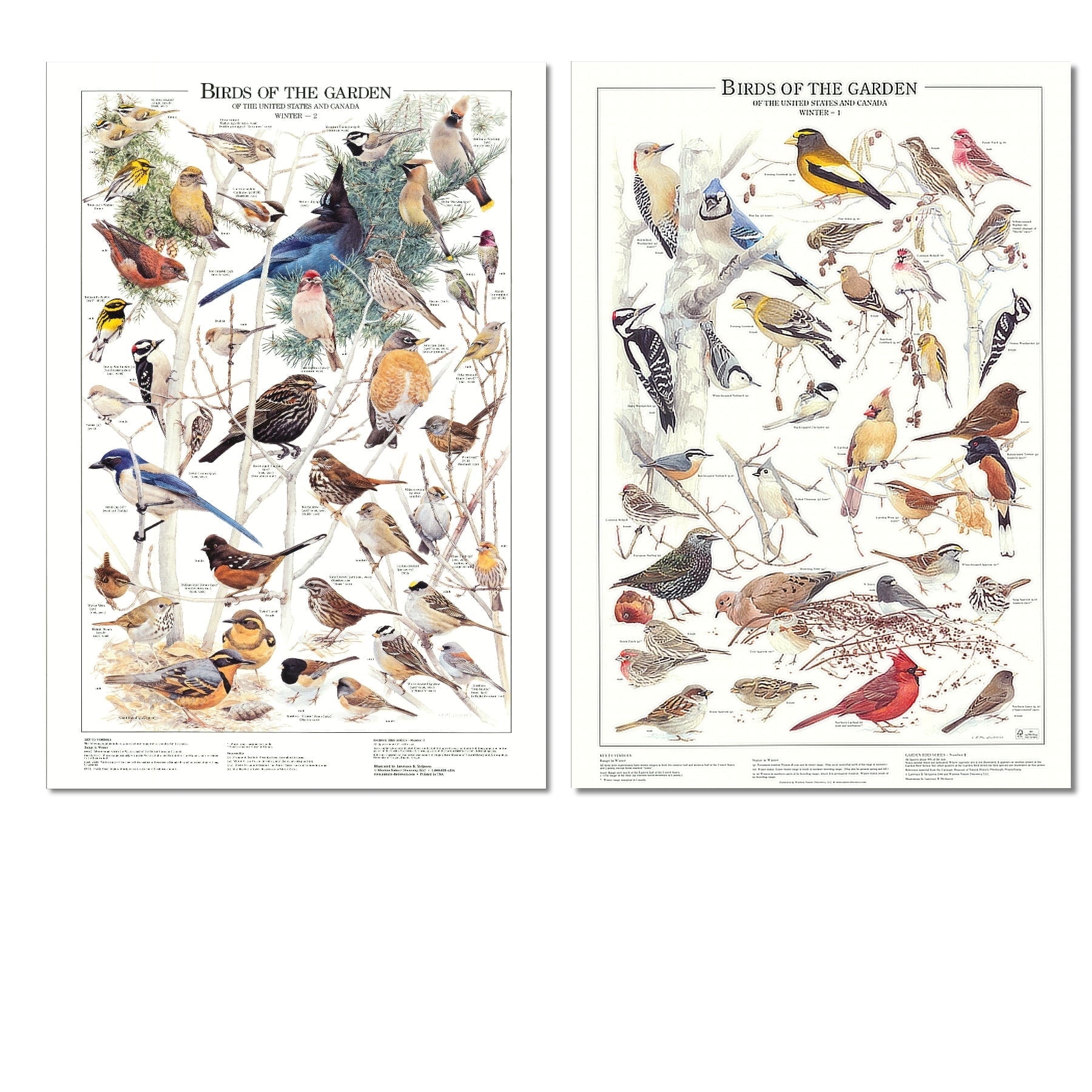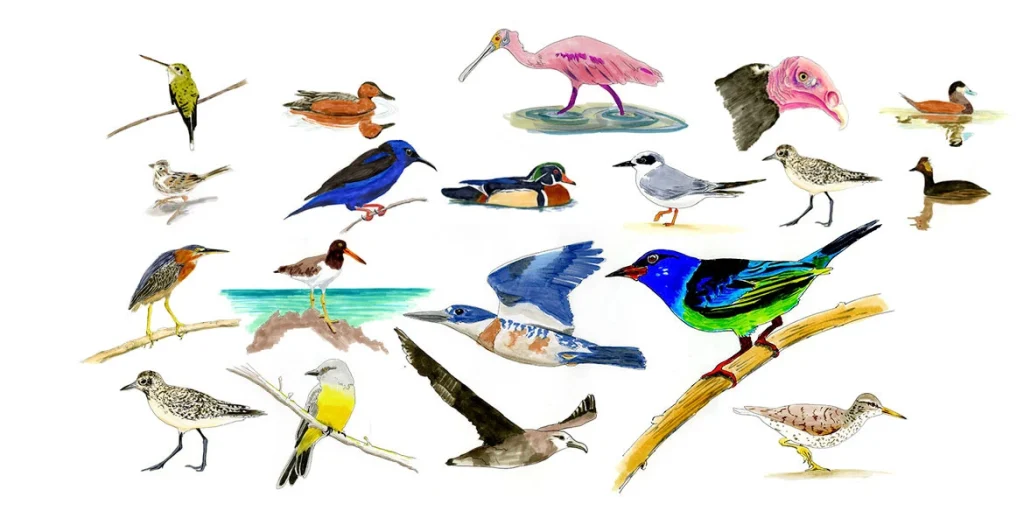Have you ever stopped to wonder about the incredible variety of bird species around you? From the vibrant colors of tropical parrots to the graceful flight of eagles, each bird has a story to tell.
Understanding these species can open your eyes to nature’s hidden wonders and deepen your connection with the world outside. You’ll discover fascinating facts that will surprise you and inspire you to look closer the next time you see a bird.
Ready to explore the amazing diversity of bird species and learn what makes each one unique? Let’s dive in!
Colorful Birds Around The World
Birds show amazing colors in nature. Their feathers come in many bright shades.
These colors help birds attract mates and hide from predators. Let’s explore some colorful birds worldwide.
Tropical Birds With Vibrant Plumage
Tropical birds live in warm, wet places. They have bright feathers in red, blue, green, and yellow.
Many tropical birds use their colors to find partners and stand out in the forest.
- Scarlet Macaw – bright red, blue, and yellow feathers
- Resplendent Quetzal – green and red with long tail feathers
- Mandarin Duck – orange, blue, and white patterns
Birds With Unique Feather Patterns
Some birds have special feather shapes or patterns. These patterns help them blend or show off.
Patterns can be spots, stripes, or patches in many colors. They make each bird look special.
- Owl – feathers with spots and stripes for camouflage
- Woodpecker – black and white stripes with red patches
- Peacock – eye-like patterns on tail feathers
Rare Birds With Iridescent Colors
Some birds have shiny feathers that change color in the light. This effect is called iridescence.
Iridescent feathers help birds attract mates and look magical in the sun.
- Hummingbird – tiny birds with shimmering green and blue feathers
- Starling – black feathers with purple and green shine
- Bird of Paradise – colorful feathers with glowing effects
Elusive Birds In Remote Habitats
Many bird species live far from people. These birds are hard to find. They live in places like rainforests, mountains, and deserts.
These birds have special ways to survive. They blend into their homes or stay hidden. Studying them helps us learn about nature.
Birds Found Only In Rainforests
Rainforests have many rare birds. These birds live only in thick, wet forests. They often have bright colors or strange calls.
Some rainforest birds eat fruits, insects, or small animals. They stay high in the trees or deep in the forest floor.
- Harpy Eagle: a large, powerful bird that hunts monkeys.
- Resplendent Quetzal: known for its bright green and red feathers.
- Hoatzin: a bird with a strong smell and clawed wings as a chick.
Mountain-dwelling Rare Species
Mountains have birds that live in cold, rocky places. These birds are strong and can fly in thin air. They use camouflage to hide.
Mountain birds often eat seeds, insects, or small animals. They build nests in cliffs or tall trees.
- Snow Partridge: lives in snowy areas and blends with rocks.
- Bearded Vulture: eats bones and lives high on cliffs.
- Tibetan Snowcock: a shy bird found in the Himalayas.
Desert Birds With Uncommon Features
Desert birds survive in hot, dry places. They have special traits to keep cool and find water. Some can live without water for days.
These birds eat seeds, insects, or small reptiles. They often rest during the hottest part of the day.
- Sandgrouse: flies long distances to find water.
- Pharaoh Eagle-Owl: has large eyes to see at night.
- Cactus Wren: nests in thorny cacti for protection.
Birds With Extraordinary Features
Birds are amazing creatures with many unique traits. Some have unusual beaks, others show big size differences. Many birds sing special songs that stand out.
Exploring these features helps us understand how birds survive and thrive in different environments.
Species With Unusual Beaks
Birds use their beaks for feeding, building nests, and defense. Some species have beaks shaped in strange ways to help them get food.
The shape and size of a beak can show how a bird lives and what it eats.
- Pelicans have large pouch-like beaks to catch fish.
- The Sword-billed Hummingbird has a beak longer than its body.
- Crossbills have crossed tips on their beaks to open pine cones.
- The Toucan’s bright, large beak helps reach fruit on branches.
Birds With Remarkable Size Differences
Birds come in many sizes, from tiny to huge. Some species show great size differences between males and females.
These size differences help birds with mating and survival in their habitats.
- The Harpy Eagle is one of the largest birds of prey, with females much bigger than males.
- Male and female Red-necked Phalaropes swap typical roles, with females larger and more colorful.
- The Bee Hummingbird is the smallest bird, weighing less than a penny.
- Ostriches are the largest living birds, standing over 9 feet tall.
Unique Bird Calls And Songs
Bird songs and calls help birds communicate. Some birds have unique sounds not heard in other species.
These sounds can warn of danger, attract mates, or mark territory.
- The Lyrebird can mimic many sounds, including chainsaws and cameras.
- Nightingales sing long, beautiful songs at night to attract mates.
- The Kakapo, a flightless parrot, makes deep booming calls that carry far.
- Common Ravens use a variety of calls to communicate complex messages.

Credit: www.walmart.com
Conservation Of Rare Birds
Rare birds are important to nature and need our help. Protecting them keeps ecosystems healthy and balanced.
Many rare bird species face dangers that put their survival at risk. Conservation efforts work to save these birds.
Threats To Rare Bird Species
Habitat loss is a major threat to rare birds. As forests and wetlands disappear, birds lose places to live and feed.
Other threats include hunting, pollution, and climate change. These dangers reduce bird numbers quickly.
- Deforestation destroys nesting areas
- Illegal hunting lowers bird populations
- Pollution harms food and water sources
- Climate change shifts habitats and food supply
Successful Conservation Efforts
Protected areas help rare birds by keeping their habitats safe. Many parks and reserves support bird survival.
Breeding programs and habitat restoration also increase rare bird numbers. These efforts bring species back from the edge.
- Creating wildlife reserves
- Captive breeding and release
- Replanting native trees and plants
- Removing invasive species
How To Support Bird Preservation
You can help rare birds by learning about them and sharing what you know. Awareness leads to action.
Supporting local conservation groups and avoiding harmful products also protect birds. Simple actions make a difference.
- Join bird watching groups
- Support habitat protection projects
- Use bird-friendly products
- Plant native trees and flowers
Birdwatching Tips For Rare Species
Birdwatching for rare species can be exciting and rewarding. It takes patience and good planning to see these special birds.
Knowing where and when to look helps you find rare birds more easily. Being prepared with the right tools and respect for nature is important.
Best Times And Places To Spot Rare Birds
Early morning and late afternoon are the best times to see rare birds. These times are when birds are most active.
Look for rare birds in protected parks, wetlands, and nature reserves. These places often have diverse bird populations.
- Visit during migration seasons for more variety
- Check local birdwatching reports for recent sightings
- Explore quiet areas with good cover for birds
Essential Gear For Birdwatchers
Using the right gear makes birdwatching easier and more fun. Binoculars help you see birds clearly from a distance.
A field guide or bird identification app helps you learn about different species. Bring a notebook to record your sightings.
- Binoculars with good magnification
- Field guidebook or bird ID app
- Notebook and pen for notes
- Camera with zoom lens (optional)
- Comfortable clothing and sturdy shoes
- Water and snacks for long trips
Ethical Birdwatching Practices
Respect birds and their habitats while watching. Avoid making loud noises or sudden movements that scare them.
Keep a safe distance from nests and birds. Do not try to touch or feed them. Leave no trash behind to protect the environment.
- Stay on marked trails to avoid habitat damage
- Use binoculars to observe without disturbing
- Do not chase or capture birds for photos
- Follow local rules and guidelines for birdwatching
- Share sightings respectfully without revealing exact locations

Credit: www.wildlifenomads.com

Credit: www.birdsandblooms.com
Frequently Asked Questions
What Are The Most Common Bird Species?
The most common bird species include the House Sparrow, European Starling, and Rock Pigeon. These birds are frequently found in urban areas worldwide. They have adapted well to human environments and are often seen in parks, gardens, and cityscapes.
How Do Birds Differ In Their Habitats?
Birds have diverse habitats, ranging from forests and grasslands to deserts and wetlands. Each species adapts to its environment for survival. Some birds migrate seasonally, while others remain in their preferred habitats year-round.
What Is The Largest Bird Species?
The Ostrich is the largest bird species, standing up to 9 feet tall. It is native to Africa and is known for its impressive size and speed. Ostriches are flightless birds but are excellent runners, capable of reaching speeds up to 45 miles per hour.
How Many Bird Species Exist Worldwide?
There are approximately 10,000 bird species worldwide. These species are distributed across various regions and habitats. New species are occasionally discovered, adding to the global biodiversity of birds. Conservation efforts are crucial to protect these species from extinction.
Conclusion
Bird species show us the beauty of nature’s variety. Each bird has its own colors, sounds, and habits. Watching birds can bring joy and calm to our daily life. Protecting their homes helps keep our world healthy. Learning about birds helps us understand nature better.
Enjoy the songs and flights of these amazing creatures. Nature’s wonders are closer than we think. Keep exploring and appreciating the world of birds.

